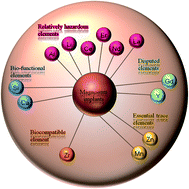Effects of alloying elements on the corrosion behavior and biocompatibility of biodegradable magnesium alloys: a review
Abstract
Magnesium (Mg) based alloys have been extensively considered for their use as biodegradable implant materials. However, controlling their corrosion rate in the physiological environment of the human body is still a significant challenge. One of the most effective approaches to address this challenge is to carefully select alloying compositions with enhanced corrosion resistance and mechanical properties when designing the Mg alloys. This paper comprehensively reviews research progress on the development of Mg alloys as biodegradable implant materials, highlighting the effects of alloying elements including aluminum (Al), calcium (Ca), lithium (Li), manganese (Mn), zinc (Zn), zirconium (Zr), strontium (Sr) and rare earth elements (REEs) on the corrosion resistance and biocompatibility of Mg alloys, from the viewpoint of the design and utilization of Mg biomaterials. The REEs covered in this review include cerium (Ce), erbium (Er), lanthanum (La), gadolinium (Gd), neodymium (Nd) and yttrium (Y). The effects of alloying elements on the microstructure, corrosion behavior and biocompatibility of Mg alloys have been critically summarized based on specific aspects of the physiological environment, namely the electrochemical effect and the biological behavior.


 Please wait while we load your content...
Please wait while we load your content...